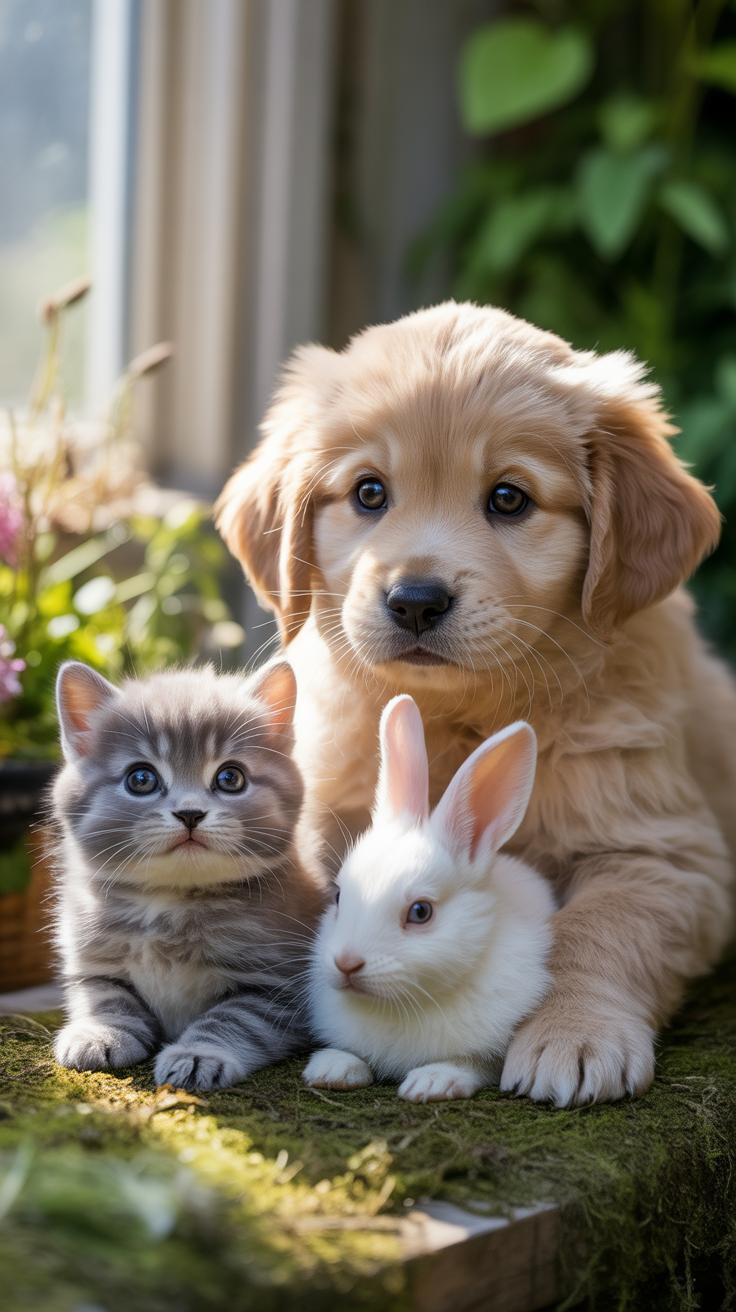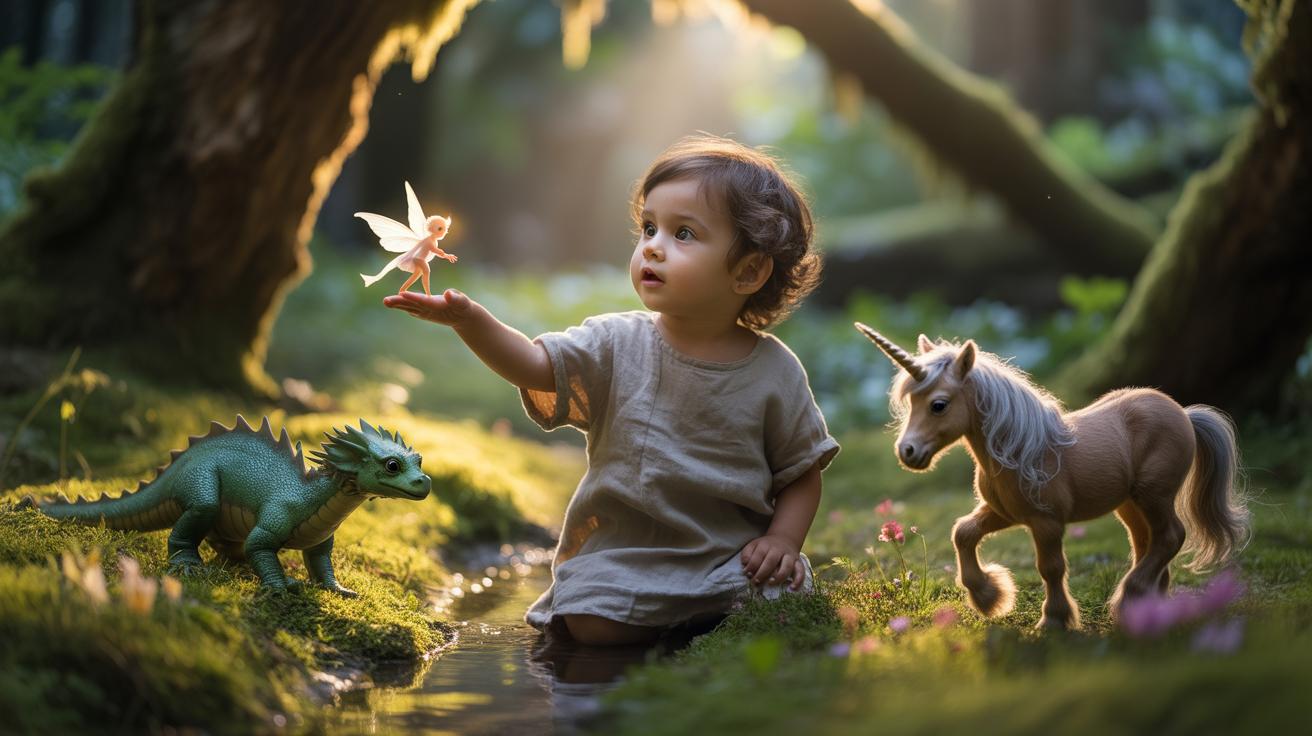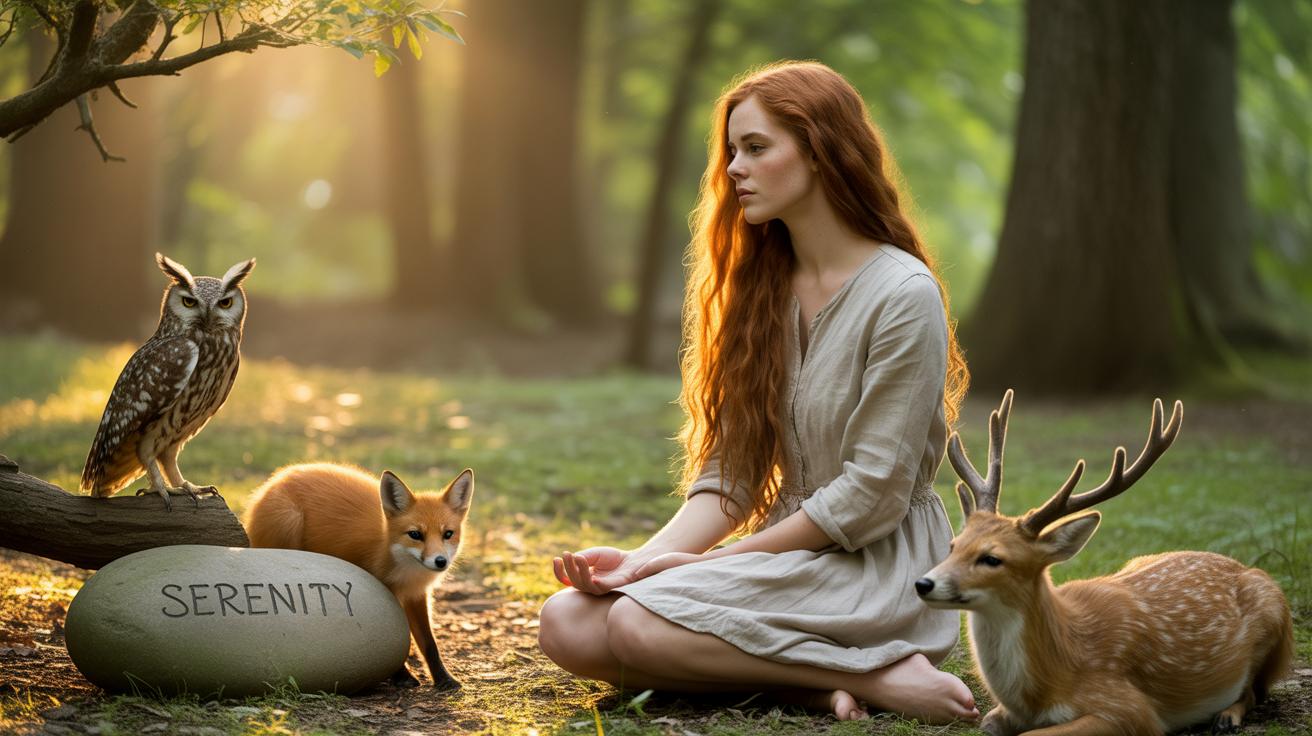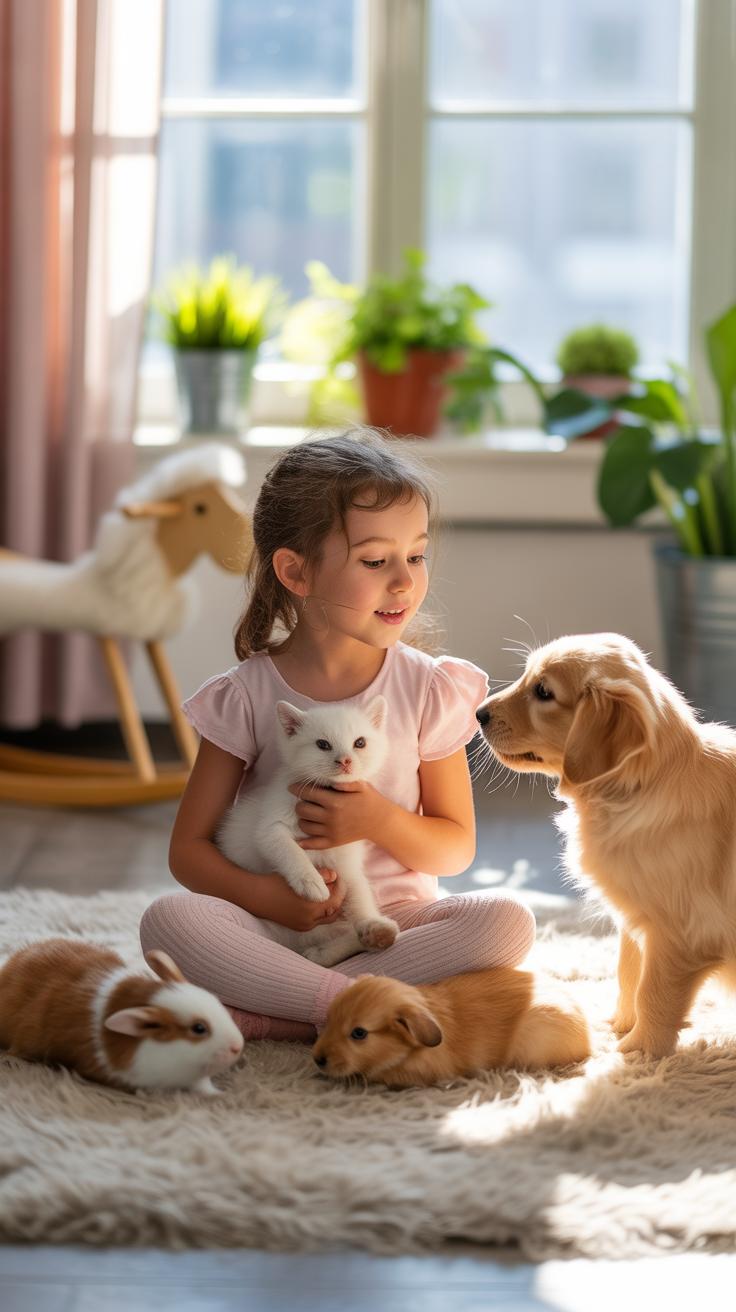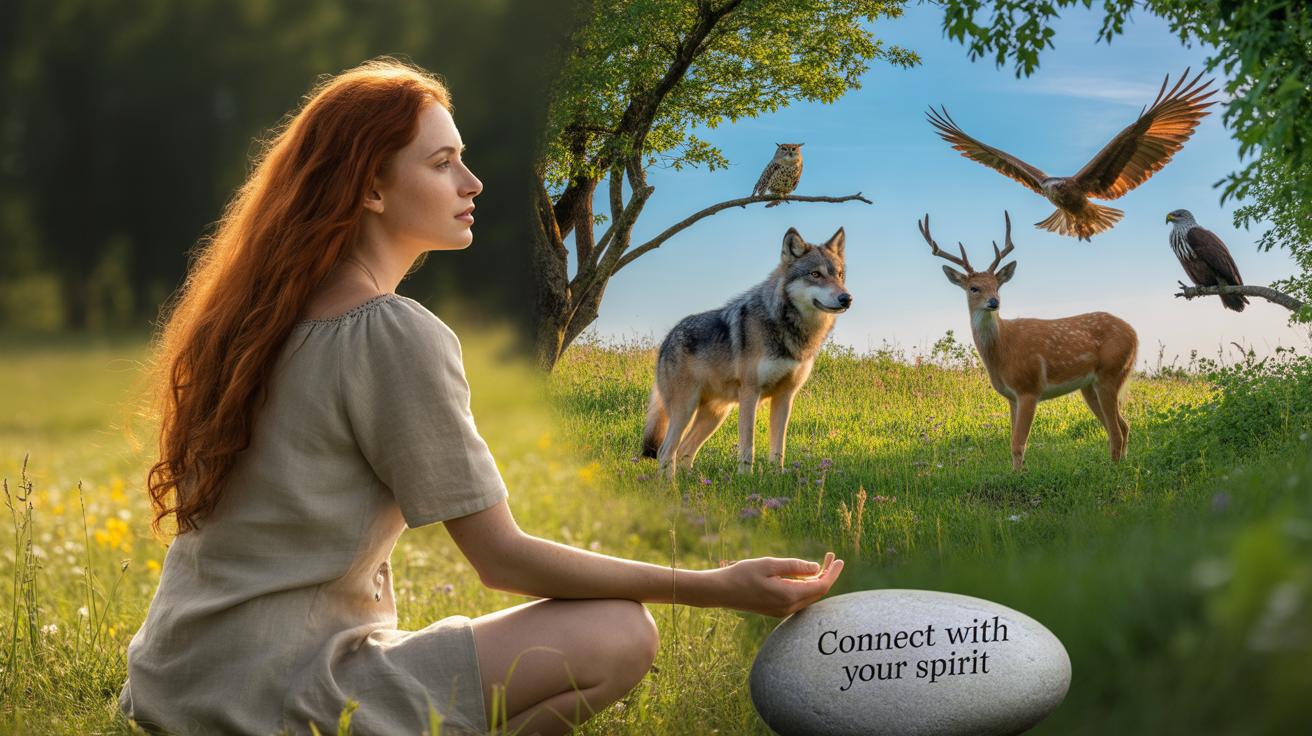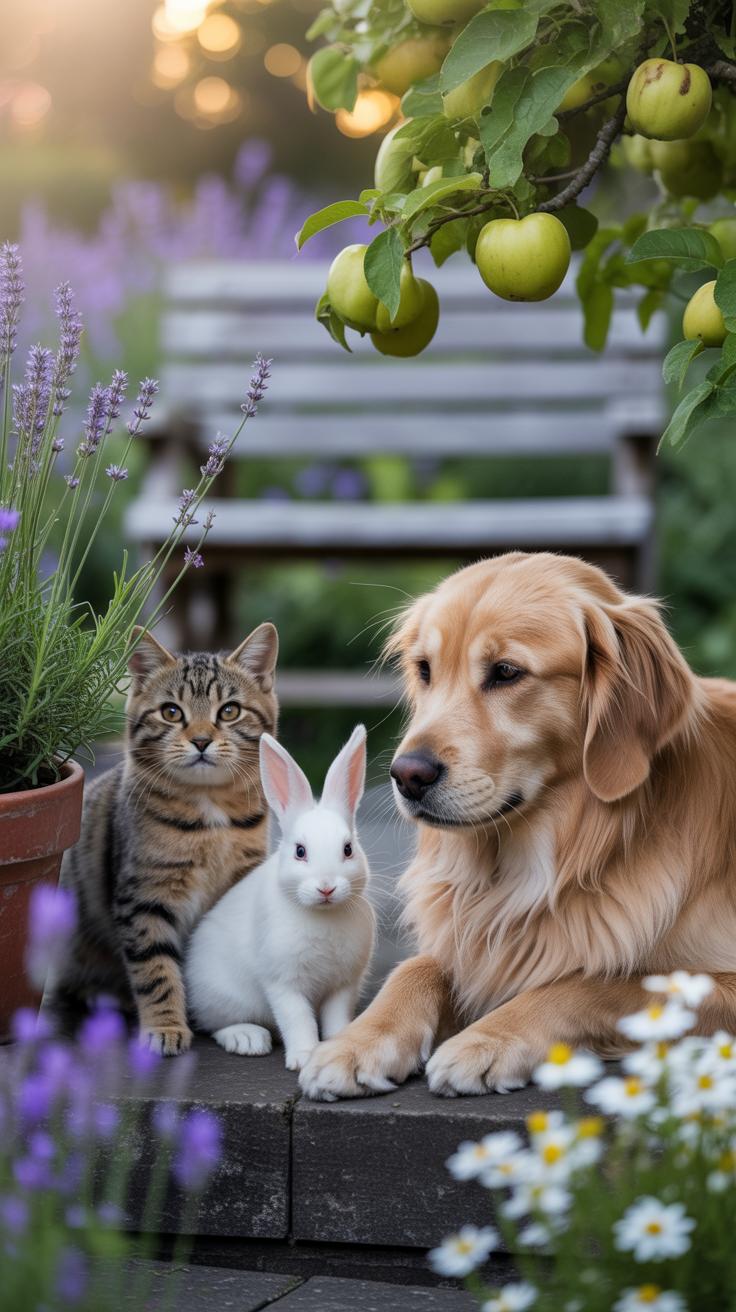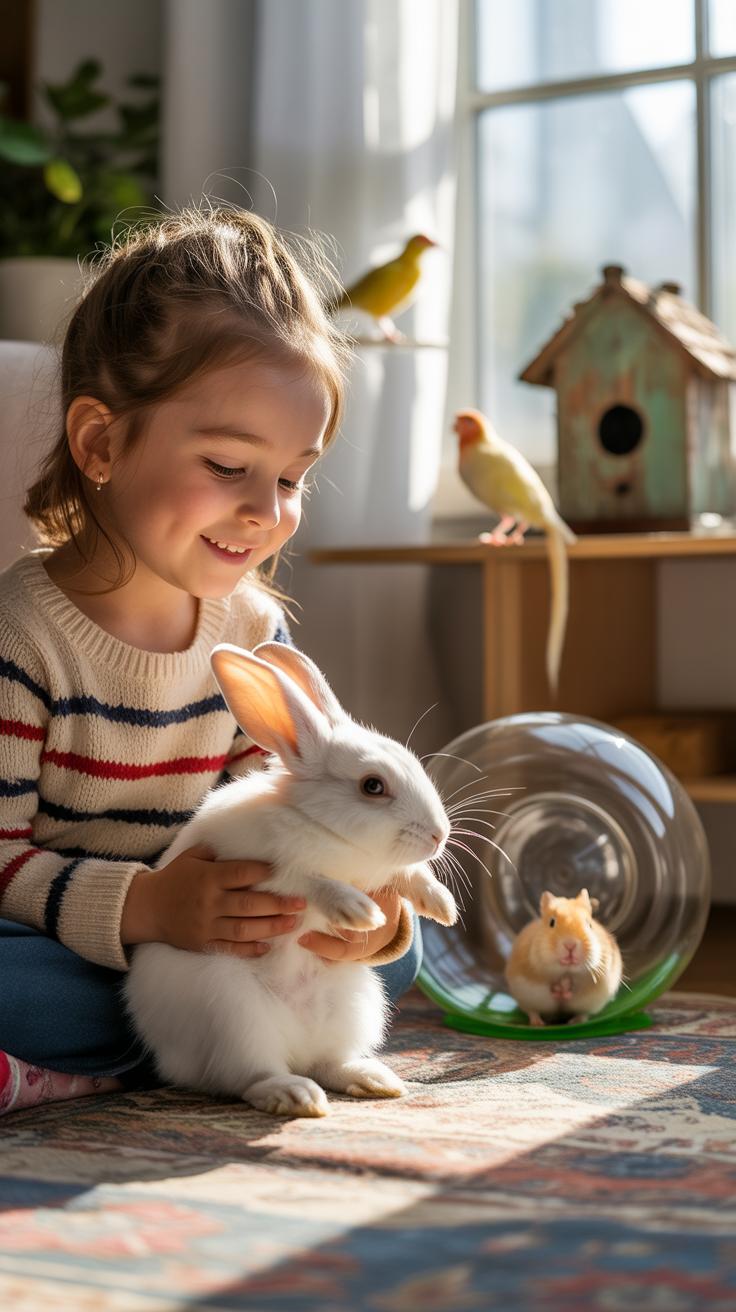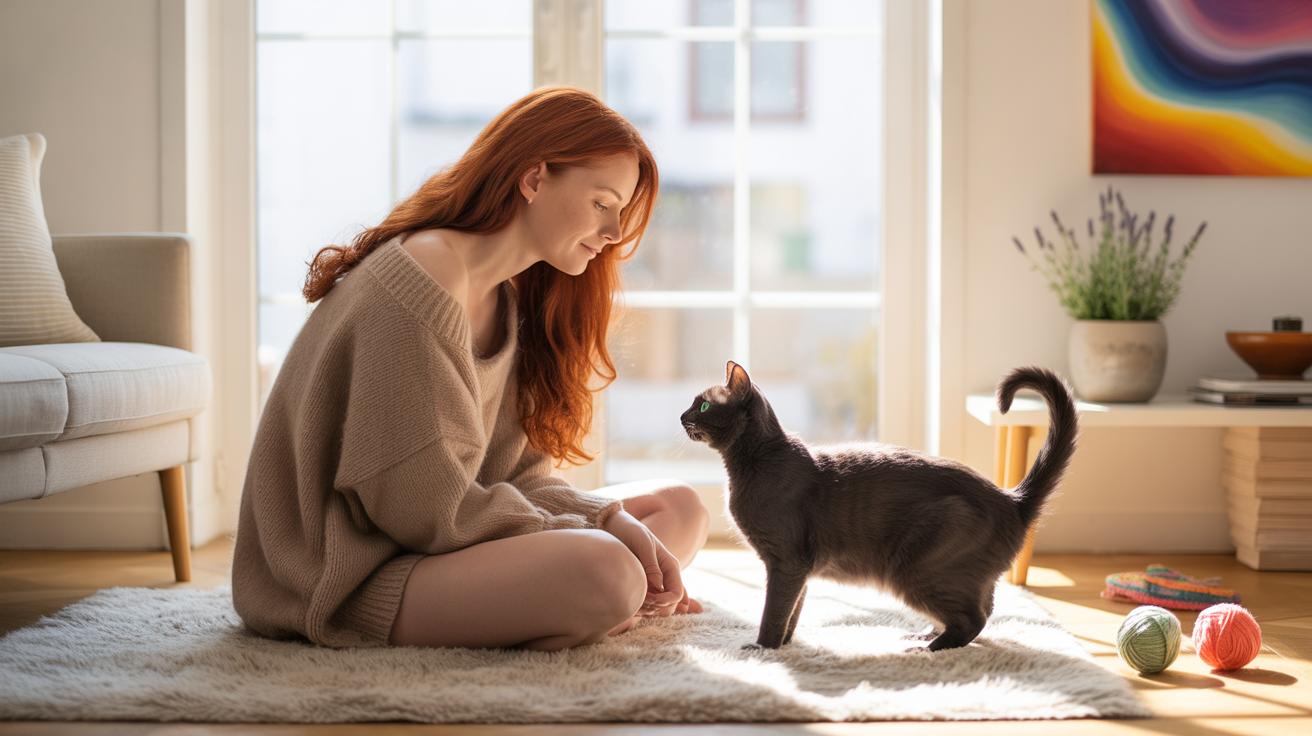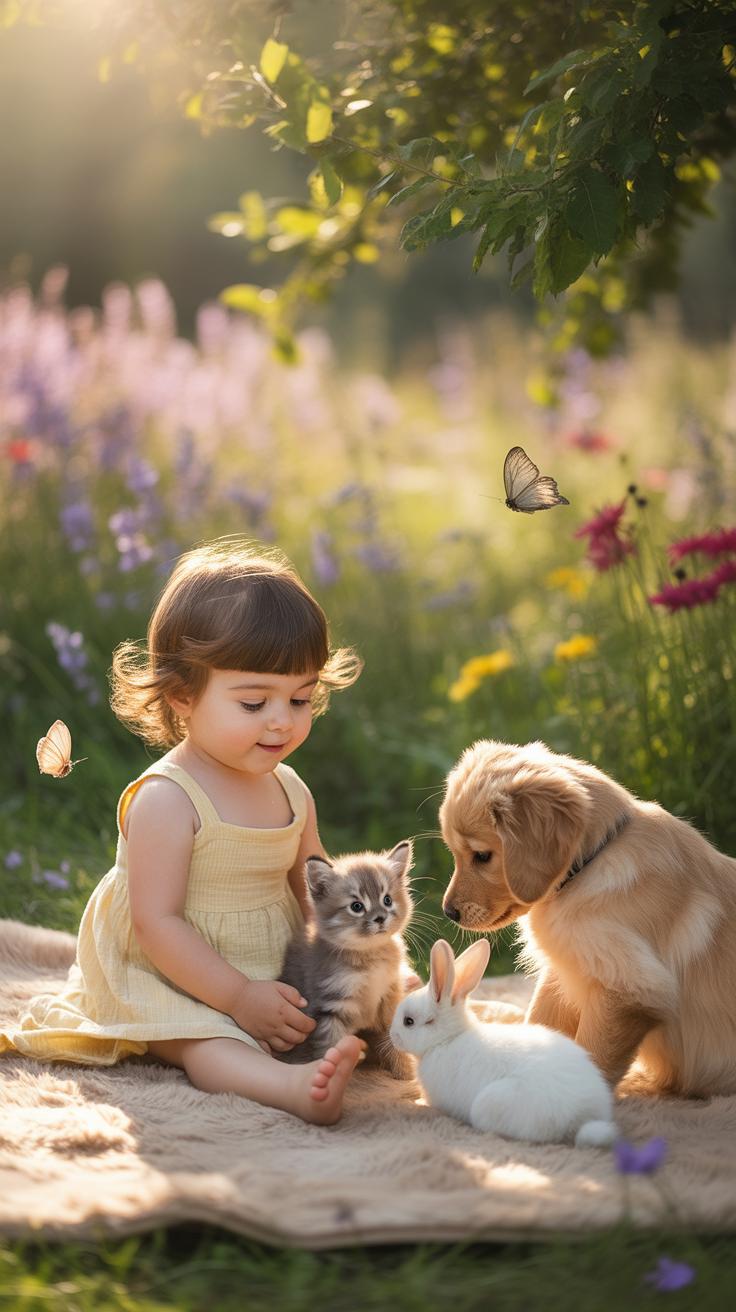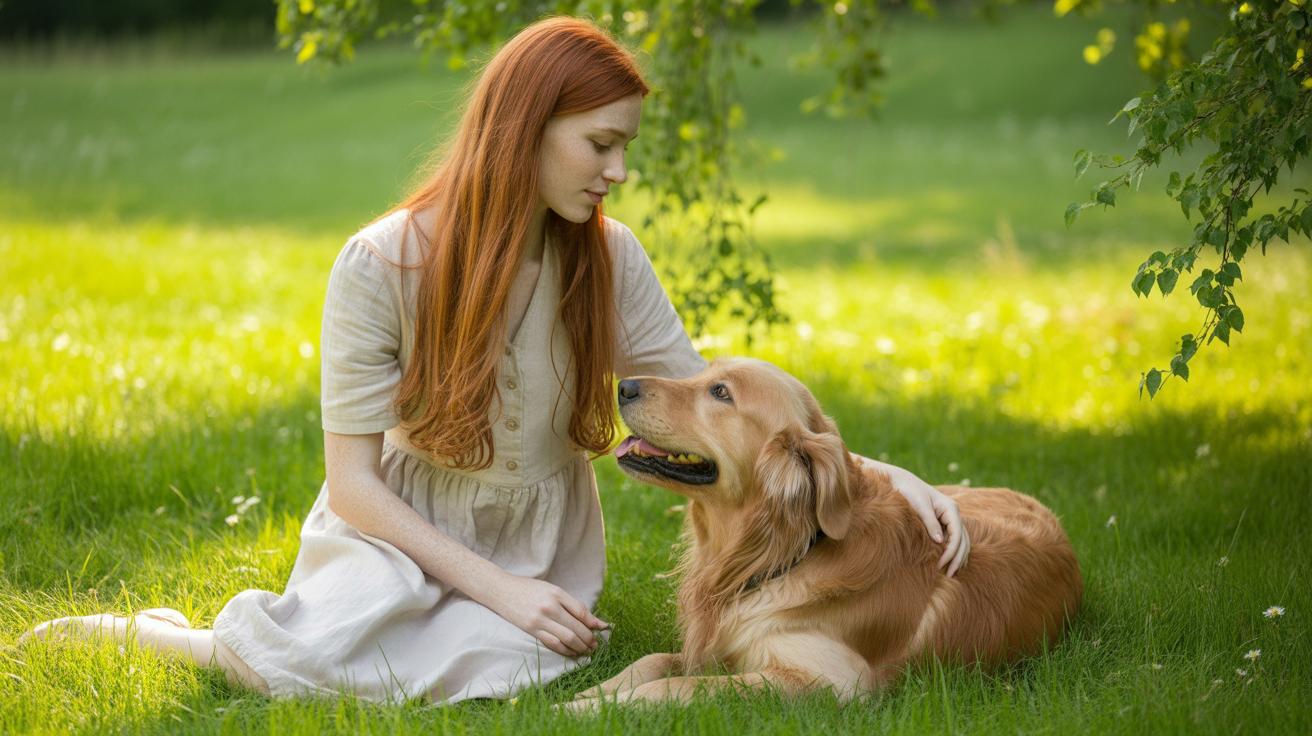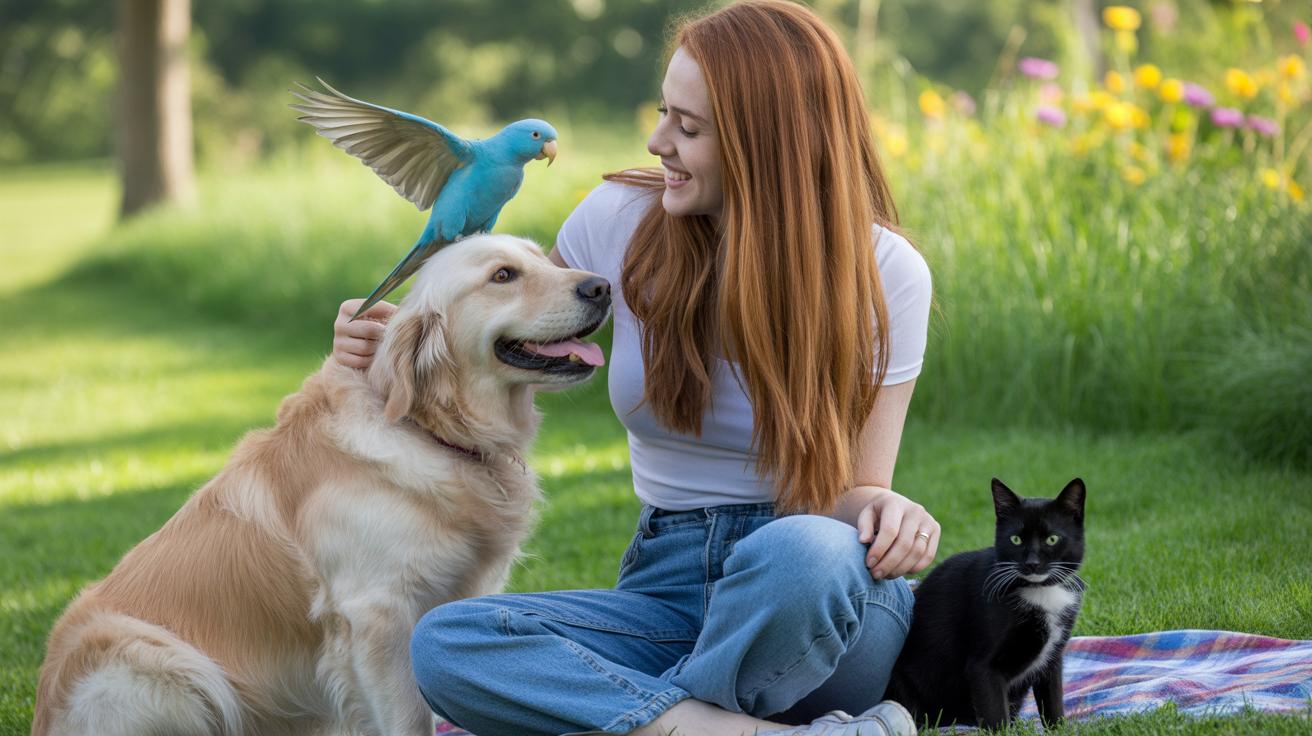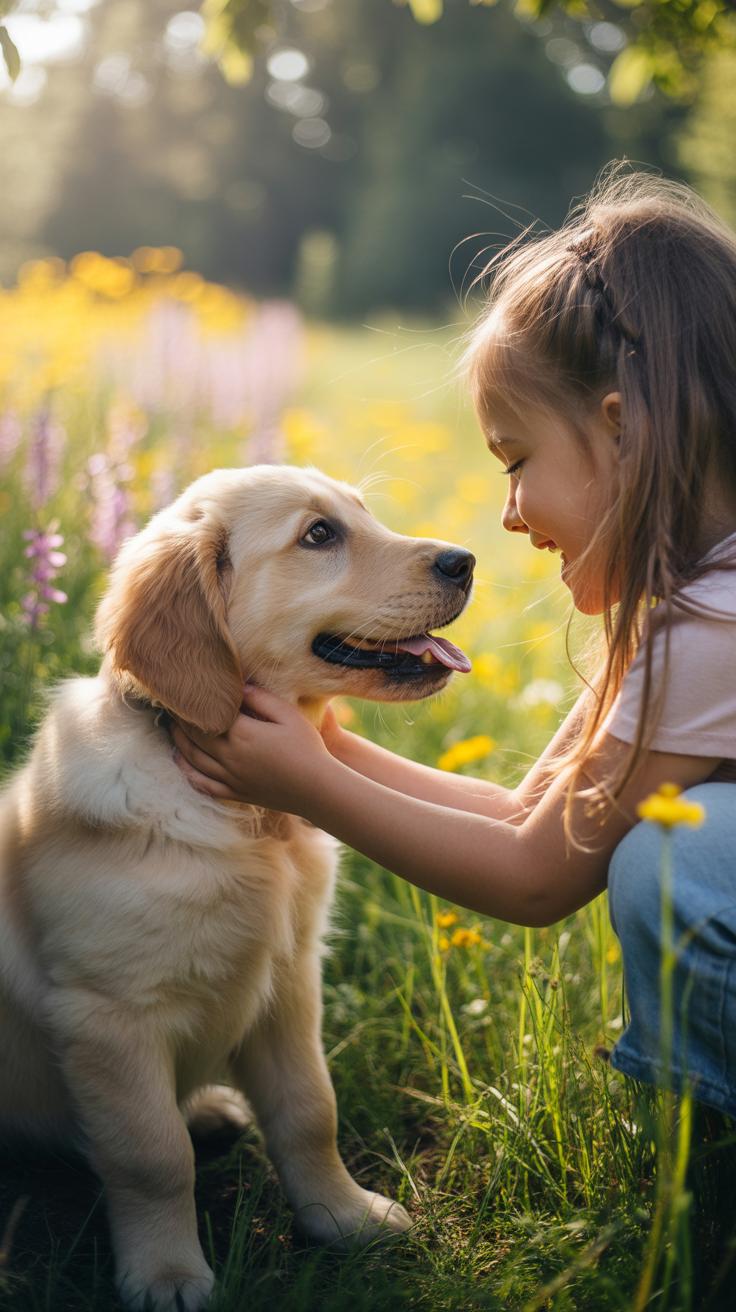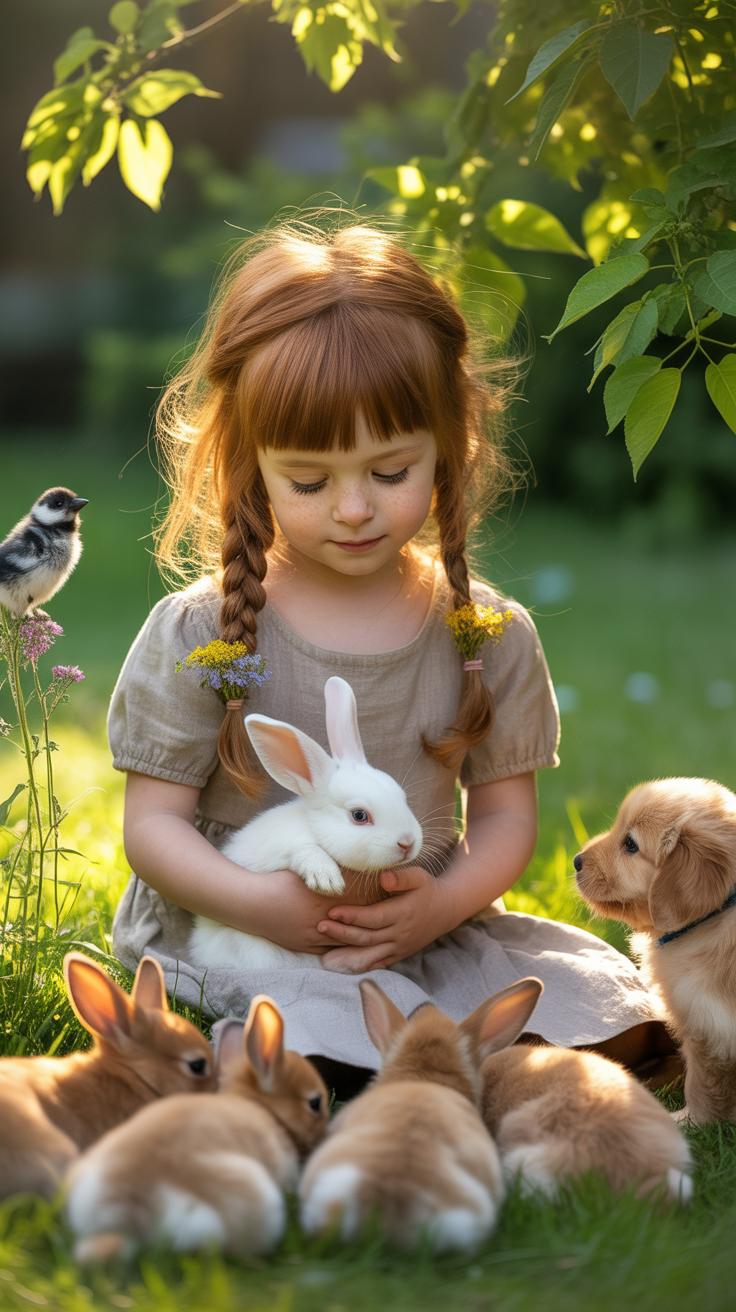Introduction
Feeling calm and relaxed can be a challenge in our busy lives. Cute little animals, with their small size and charming features, can play a special role in helping you find peace every day. Their appearance often triggers caring feelings and helps your brain release calming responses. These little creatures do more than just look adorable; they can impact your mood and help reduce stress in a natural way.
This article explores the science behind why cute little animals help you feel calm and how you can invite their calming presence into your daily routine. We will look at the traits that make animals appear cute, how they influence your emotions, and practical ways to enjoy their calming effects in various settings.
Why Small Animals Look Cute To You
The Baby Features That Make Animals Adorable
When you look at little animals like puppies, kittens, or bunnies, their faces often catch your attention instantly. That’s mostly because they have what scientists call “baby-like” traits. Think of big, round eyes that seem to take up most of their face, tiny noses, and soft, rounded cheeks. These features remind you of human babies, which naturally makes you feel protective and warm inside. It’s almost like your brain says, “Hey, this little one needs care.”
For example, a baby chick’s big eyes and small beak create a gentle look that pulls you in. Or consider a guinea pig’s plump cheeks and little button nose—they look soft and harmless. These characteristics aren’t just random. They trigger a natural response. You might find yourself wanting to smile or even cuddle the animal, simply because they look vulnerable and sweet.
How Seeing Cute Animals Affects Your Brain
There’s something real going on inside your head when you see these small, cute animals. Studies show that looking at their faces lights up areas of the brain linked to pleasure and caring behavior, like the parts connected to happiness and nurturing instincts. This isn’t just about feeling good for a moment — it’s like your brain presses a little pause button on stress and tension.
Take a moment. Think about how calm you feel watching a puppy tilt its head or a kitten blink slowly. That gentle focus relaxes your mind. It’s as if your brain rewards you with small feelings of joy, making you want to care for the animal or just enjoy the peaceful moment. It might feel simple or even subtle, but these moments can really help soften your mood when life feels busy or overwhelming.
Animals in Therapy To Help You Feel Calm
What Is Animal-Assisted Therapy
Animal-assisted therapy is when trained animals, like dogs or sometimes even rabbits, spend time with people to help them feel better emotionally. It’s not just about petting a furry friend—it’s a guided process where animals assist therapists by offering comfort and a calming presence. You might think it sounds simple, but the effect can be surprisingly powerful. When you interact with these animals, your body often releases chemicals that reduce anxiety and lift your mood. It can be as basic as a therapy dog lying quietly beside a patient during a tough moment, or helping someone open up during a session.
Examples Where Therapy Animals Help People
Therapy animals appear in places where stress runs high. For example:
- In hospitals, dogs often visit patients to ease loneliness and offer distraction from pain.
- Nursing homes use cats or small dogs to bring smiles and reduce feelings of isolation among the elderly.
- Therapists working with children might include trained rabbits or guinea pigs to help kids feel safe and open up.
Sometimes, these animals help someone take a deep breath, feel grounded for a while, or simply remind them there’s a calm moment amid the chaos. It’s not magic, but seeing a dog wag its tail or holding a soft animal can create a space where worries feel a little less heavy.
How Cute Animals Help Reduce Stress
Why Being Around Animals Feels Relaxing
There’s something about sitting quietly with a small animal that seems to ease tension. Maybe it’s their slow, unhurried movements or how they don’t demand much beyond a gentle touch and some attention. When you watch a hamster nibble or a rabbit twitch its nose, your mind can drift away from worries—at least for a while.
Their presence feels uncomplicated. No arguments or deadlines, just soft breathing or a calm gaze. Sometimes, just petting a cat lets your muscles loosen without you even realizing it. It’s almost automatic, this feeling of calm that comes from being near an animal. You might notice your heart rate slowing down, your thoughts less frantic. It’s subtle but real.
Simple Activities To Lower Stress Using Animals
There are some really easy ways to invite calm into your day with animals. You don’t need anything fancy or time-consuming.
- Petting a cat or dog for a few minutes. The gentle, repetitive motion can ground you.
- Watching birds outside your window. Their movements can be oddly hypnotic.
- Playing with a small pet like a guinea pig or hamster. Holding or lightly interacting with them shifts your focus.
- Feeding fish in a tank. The slow flow of their swimming encourages a slower breath.
- Simply sitting nearby a pet and letting them come to you. Sometimes the quiet company is enough.
These things don’t fix stress completely, but they offer a little pause, a break from spinning thoughts. It’s worth trying, especially when your day feels a bit too much.
How Animals Tell You They Want to Keep Things Calm
What Are Calming Signals Animals Use
Animals don’t speak our language, but they have their own quiet ways to say, “I don’t want trouble.” These behaviors, often called calming signals, help keep situations peaceful. For example, a dog might slowly turn its head away or avoid direct eye contact when feeling unsure. It’s like a gentle “let’s be calm” message.
You might notice a cat doing a slow blink or even yawning when it wants to ease tension. Birds fluffing their feathers sometimes means they’re relaxed and not threatened. Even rabbits twitch their noses in subtle ways to signal calmness.
These actions aren’t dramatic. They’re small and easy to miss at times, but they matter a lot. Slow movements, soft sounds, gentle gestures—all help animals show they want peace instead of conflict.
How Learning Animal Signals Can Help You
When you start recognizing these signals, your interactions change a bit. You’re more tuned in, noticing when your pet looks away or yawns. Instead of pushing for play or more attention, you might give them space, which often leads to better moods all around.
Understanding these cues also means you can respond with kindness and patience. If a dog turns away, you might pause and let it approach you on its terms rather than forcing interaction. This can make your time together feel softer, less stressful—for both of you.
Honestly, it takes practice. Sometimes you think you’re reading the signals right and maybe you’re a bit off, but paying attention can make your experience with cute animals calmer, even on chaotic days. Doesn’t it feel nicer when things just flow without tension?
Bringing Cute Little Animals Into Your Everyday Life
Having a Small Pet For Comfort
Small pets like hamsters, rabbits, or fish can quietly change the pace of your day. They don’t demand much space, but their presence feels surprisingly comforting. Watching a hamster explore its tiny world or a rabbit softly twitch its nose can break up tension without you even realizing it.
These animals often need simple care—regular feeding, fresh water, clean bedding or tank—yet that routine can add a gentle rhythm to your life. It’s more than just responsibility. It’s about feeling connected to a living thing, which can soothe your mind faster than you might expect.
Sometimes, I find that just sitting quietly beside my fish tank helps me reset after a stressful morning. Maybe it’s the way the fish glide in and out of view, maybe just that small distraction. Still, having a small pet invites moments to pause, and maybe that’s the real gift.
Enjoying Animals Without Owning Them
If having a pet doesn’t fit your lifestyle, there are still other ways to bring animals close. Visiting parks or nearby nature spots lets you watch squirrels, birds, or even frogs during quiet walks. These little encounters, brief as they are, can soften your mood.
When that’s not possible, videos or webcams of animals—penguins waddling, kittens tumbling, otters playing—can do the trick. I admit, sometimes I lose track of time watching a livestream of baby turtles or foxes. It’s oddly grounding, isn’t it?
Maybe you’ve noticed how a quick glance at a cute animal photo can change your day. Why not make a small habit of it? It’s a simple but effective way to invite calm, even when the world feels a bit too loud.
How Animals Help Children Feel Calm
Children seem to have a natural connection to cute animals. There’s something about the softness, small size, and gentle movements that draws them in. Being around these little creatures helps kids calm down, sometimes almost instantly. It’s like the animals take away some of the worries or fears that children might not even fully understand themselves.
Animals also teach kids about care and responsibility. When a child gently pets a hamster or feeds a bird, they learn empathy and kindness without needing a lecture. It’s a kind of learning that sticks because it’s felt, not just heard. And when kids see an animal trust them, it often lowers their anxiety. They begin to feel safe, which can be hard to come by for some children.
What’s interesting is that animals don’t judge or rush, and that calm presence can be a subtle but powerful comfort. It sometimes helps children open up about their feelings just by being near a furry or feathered friend.
Animals And Emotional Learning For Kids
Animals are simple mirrors for emotions. When a child feels happy or sad, an animal reacts without words but with clear cues. For example:
- A dog wags its tail when excited, showing joy.
- A rabbit hides when startled, signaling fear.
- A cat purrs gently when relaxed, inviting calmness.
By noticing these behaviors, kids begin to understand nonverbal expressions of feelings. It’s like they’re learning their own emotions in a safer, more immediate way. A child might say, “The bunny looks scared, so I will speak quietly,” which shows growing emotional insight.
This connection nudges children to practice kindness naturally, rather than just following rules. Sometimes, that soft lesson is more effective than anything else.
Simple Ways Kids Can Connect With Animals
Encouraging kids to enjoy animals safely doesn’t need to be complicated. Some easy activities include:
- Watching ants on a walk and gently pointing out their patterns.
- Feeding birds using crumbs or seeds from a quiet spot outside.
- Setting up a small, calm space for a pet hamster or fish to observe.
- Drawing or coloring pictures of animals they like and talking about what those animals might feel.
These activities allow children to slow down and focus on living things smaller than themselves. It’s calming and also nurtures respect. Plus, kids often feel proud when they notice something new or care for an animal even in a simple way.
Have you noticed how a small task like feeding birds can transform a restless child into a quiet observer? That quiet moment builds a kind of comfort that lasts—sometimes longer than you expect.
The Science Behind Why Animals Make You Feel Good
Brain Changes When You See Cute Animals
When you see a small, cute animal—say, a puppy or a tiny bunny—your brain reacts almost immediately. It’s not just about liking how they look. There’s a chemical shift happening beneath your awareness. Your brain releases oxytocin, sometimes called the “bonding hormone.” This chemical helps you connect, feel warmth, and trust more easily. At the same time, dopamine—a neurotransmitter linked to pleasure—gets a boost. That’s why you might notice a little smile creeping up when petting a kitten, even if you didn’t expect it.
Interestingly, this reaction isn’t just from seeing but also from touch. Stroking soft fur sends signals to your brain that calm the amygdala, the center tied to fear and anxiety. The combination reduces the activity in parts of the brain that trigger stress. It’s almost like your mind switches gears, focusing on something simple and reassuring.
How This Helps You Feel Less Stressed
These brain chemicals don’t just make you feel “good” in a vague sense—they actively help dial down stress. The rise in oxytocin can lower cortisol, the stress hormone. This means your heart rate slows down, your blood pressure drops, and your muscles relax, even if just for a moment. It’s why people often say spending time with animals feels “grounding.”
Of course, this isn’t a perfect cure for anxiety or stress. But these small biochemical shifts make a big difference in how you handle daily pressures. That calming effect lingers and sometimes helps you reset your mood, giving you a little mental break. It’s like your brain says, “Okay, this is safe. I can relax now,” even if only briefly.
How You Can Use Cute Little Animals To Calm Down
When stress creeps in, turning to a cute little animal might be one of the simplest ways to ease your mind. But how do you do this intentionally, rather than just stumbling onto the comfort they offer? Start small. Maybe reach out to pet your dog or cat for just a few minutes. Notice their warmth, the softness of their fur, the rhythm of their breathing. These small moments demand your focus and can pull you out of a spiral of anxious thoughts.
Sometimes, you don’t have a pet nearby. You could watch videos of baby animals—puppies, kittens, or even tiny birds. I’ve noticed that even just five minutes of watching animals playing or resting can shift my mood. It’s almost like a natural pause button.
Try this: when feeling overwhelmed, take a deep breath and find something small and cute—a hamster, a fish, or a bunny. Observe it quietly. Let your mind follow its gentle movements or curious eyes. This kind of mindful attention isn’t about fixing your stress immediately but allowing yourself a brief moment of calm.
Ways To Connect With Animals When Stressed
Connecting with animals doesn’t require a lot of effort or special conditions. Here are some easy steps you might try right now:
- Sit next to your pet and softly stroke their fur or feathers. Notice your own feelings as you do this.
- Watch short videos of animals doing simple, everyday things like napping or eating. It’s oddly soothing.
- Spend a few minutes outside watching birds or squirrels—there’s something oddly grounding about their busy, yet focused behavior.
- Try talking to your pet or the animal you see. It sounds silly but expressing your feelings aloud can help you process stress.
It’s okay if you don’t feel calm right away. Sometimes just shifting your attention is progress.
Creating Daily Routines With Animals For Calm
If you find animals help you feel calmer, why not build small habits around them? You might start your morning by saying hello to your pet or watching a brief animal video with your coffee. Maybe spend five minutes in the evening simply observing your pet or another animal online, focusing on their movements or sounds.
Try to link these moments to existing routines so they become almost automatic. After brushing your teeth or before checking your phone, pause to interact with your pet. I think the key is regularity more than duration—you don’t have to carve out big chunks of time.
Some days you’ll skip these moments or forget, and that’s fine. But even fleeting connections with cute animals can build a gentle rhythm that steadies your mood over time. Could this be a habit worth trying? It’s the little things that tip the balance, often in ways you might not immediately notice.
Conclusions
Cute little animals have qualities that attract caring feelings and help lower stress. Their small features and gentle behaviors can soften your mood and support a sense of calmness. Scientific studies and therapy practices alike show that interacting with these animals positively affects your well-being and emotional health.
Bringing little animals into your life, whether by having pets, watching wildlife, or involving animals in therapy, offers a natural way to find comfort and peace daily. You can learn to recognize their calming signals and use these moments to relax and improve your mood.


